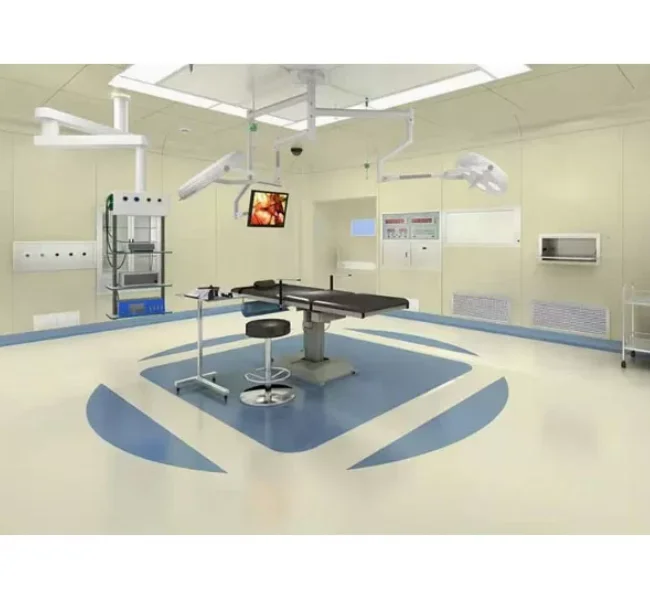In a world facing increasing environmental challenges, the importance of purification engineering has never been more significant. As industries expand and population growth accelerates, the demand for clean water, clean air, and safe industrial processes continues to rise. Purification engineering serves as the foundation for technologies and systems that remove contaminants, reduce pollution, and promote safer environments across residential, commercial, and industrial settings.

This comprehensive guide explores the role of purification engineering, its key applications, its impact on modern industries, and how its continued development contributes to sustainability and public health.
The Core Principles of Purification Engineering
At its foundation, purification engineering encompasses the scientific methods, technologies, and mechanical systems used to remove contaminants from air, water, soil, and industrial environments. These solutions are designed with the goal of improving quality, ensuring safety, enhancing efficiency, and minimizing environmental impact.
1. Contaminant Identification and Assessment
Before any purification solution is deployed, engineers must identify the exact type of contaminants present. This step determines whether the challenge involves chemical pollutants, particulate matter, biological hazards, or mixed impurities. Advanced monitoring and analytical tools are used to measure concentration levels, assess risks, and determine the most effective approach for removal.
2. Filtration and Separation Technologies
One of the primary focuses of purification engineering is the use of filtration and separation systems. Depending on the industry and application, these technologies may include:
Mechanical filters for large particles
Activated carbon systems for chemical absorption
Membrane filtration (reverse osmosis, ultrafiltration, nanofiltration)
Magnetic or electrostatic separation
Biological purification systems (biofilters, bioreactors)
Each system is designed with efficiency, cost-effectiveness, and long-term sustainability in mind.
3. Chemical and Physical Treatment Methods
In cases involving complex pollutants, engineers integrate chemical processes such as oxidation, coagulation, neutralization, and advanced catalytic reactions. Physical treatments—such as sedimentation, distillation, dehydration, and thermal processes—also play major roles depending on the specific purification requirements.
Real-World Applications of Purification Engineering
The practical applications of purification engineering span nearly every industry, influencing how we live, work, and interact with the environment. From municipal water treatment to the precision demands of semiconductor manufacturing, purification solutions support safety, productivity, and innovation.
1. Water Treatment and Wastewater Management
One of the most vital applications of purification engineering is in water purification. Clean, safe water is essential for human health, agriculture, and industry. Technologies such as membrane filtration, UV treatment, chemical dosing, and biological purification ensure that harmful substances are removed before water reaches the public or is released into the environment.
Industrial wastewater treatment also falls within this field, helping factories reduce pollutants and comply with environmental regulations.
2. Air Purification and Emission Control
With rising concerns over air quality and public health, purification engineering plays a crucial role in designing systems that remove particulates, volatile organic compounds (VOCs), toxic gases, and industrial emissions. Air purification technologies include:
HEPA and ULPA filters
Electrostatic precipitators
Catalytic converters
Air scrubbers
Activated carbon absorption systems
These solutions are used in homes, hospitals, factories, data centers, and cleanrooms to maintain safe indoor and outdoor air quality.
3. Cleanroom and Environmental Control Engineering
Industries such as pharmaceuticals, biotechnology, aerospace, and electronics require contaminant-free environments to produce high-precision products. Purification engineering supports the creation of cleanrooms with advanced airflow, filtration, and environmental monitoring systems, ensuring the highest standards of purity and control.
4. Soil and Groundwater Remediation
Polluted land and groundwater can pose severe environmental and health risks. Engineers use biological treatments, soil extraction systems, thermal remediation, and chemical stabilization to restore contaminated sites. These efforts are crucial in environmental restoration, urban development, and responsible industrial transitions.
5. Industrial Process Purification
Many manufacturing processes require highly purified water, chemicals, or gases. Purification engineering ensures that raw materials and processing environments meet exact specifications—for example, semiconductor manufacturing requires ultrapure water to prevent defects in microchips.
Hebei Lixin Medical Engineering Co., Ltd. was established in 2011. medical oxygen generator manufacturers The company specializes in the production and sales of medical central gas supply systems,medical oxygen generator manufacturers medical molecular sieve oxygen generation equipment, medical oxygen generator factory low-pressure oxygen chambers, medical air purification equipment, and undertakes projects such as hospital operating room and laboratory purification, cleanroom construction, radiation protection engineering, and medical wastewater treatment engineering.medical oxygen plant manufacturer